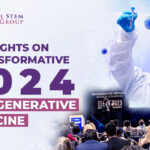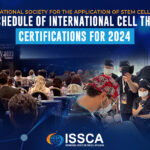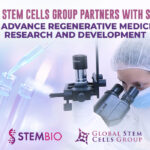The loss of bone mass and the weakening of the bones are natural consequences of aging, but this process starts around the age of 30, so it’s not only the elderly that are at risk for falls and fractures due to bone resorption.
Some of the factors that cause the decrease in bone mass density can be controlled, but others are out of one’s control. Smoking for example can be avoided, and one can practice strength exercises to keep their bones strong, but an inadequate intake of calcium, the use of asthma medications, as well as the changes in hormone levels that occur in older adults can speed up the weakening of bones.
Also, this process is accelerated by an inadequate intake of vitamin D, the lack of exposure to gravity and hypoparathyroidism, all these factors favoring the resorption of bone. When the tissue is broken down faster than it can be renewed, the density of bones starts to decrease and they become more porous, fragile and prone to fractures.
Although there are a series of conventional treatments that can help in improving bone density in osteoporotic patients, people who suffer multiple fractures, major bone trauma or individuals injured during natural disasters may require a different approach. In such cases, the use of stem cells could speed up bone repair and eliminate the risk of tumor formation.
STEM CELLS FROM BONES AND SKIN, USED FOR BONE RECONSTRUCTION
Scientists from the Gladstone Institutes have discovered a way to stimulate bone reconstruction using proteins produced by stem cells. Instead of grinding up bones from cadavers in order to extract the proteins and growth factors needed for stimulating the growth of new tissue, the researchers have extracted bone-forming proteins from stem cells.
After they treated the proteins in the lab, they injected the substances into muscle tissue of mice, in order to facilitate bone growth. The injected proteins were effective in creating new bone tissue, so there is hope that this method may be a good solution for humans as well. Unlike current treatments, the use of stem cells is safer as it doesn’t involve the transplant of cells or tissues from cadavers or other donors, so the risk for these cells to be rejected is much lower and the risk for tumor formation is very low also.
The study published in Scientific Reports concluded that proteins extracted from stem cells could be a consistent and reproducible source material for tissue regeneration [1]. This isn’t the first study to support the use of stem cells for orthopedic purposes. In 2001, another paper published by Dr. Ranieri Cancedda in the New England Journal of Medicine described the use of autologous bone marrow cells in the repairing of large bone defects.
The research showed that the osteoprogenitor cells derived from stem cells were effective in supporting the integration of macroporous hydroxyapatite scaffolds in damaged bones. Three patients were treated using this method and CT scans taken 6 months afterwards showed good callus formation and integration of the interfaces in all patients [2].
Even more interesting were the results obtained by a team of scientists from the National Institutes of Health, Bethesda, USA, who managed to grow new bone from stem cells harvested from skin cells. The paper was published in the Cell Reports journal, the harvested skin cells being reprogramed into equivalents of embryonic stem cells [3]. The obtained iPSCs were treated in lab conditions to differentiate into precursors of bone cells, then transplanted the obtained cells into monkeys, on a ceramic scaffold.
The implanted cells grew new bone on top of the scaffolds, researchers finding no sign of tumor. According to the researchers, this technique has two great advantages: the stem cells harvested from patient’s own cells are less likely to be attacked by one’s immune system, and iPSCs can be generated from any individual.
Although the use of stem cells for speeding up the integration of implants in damaged bones is not new, scientists are now looking to develop these methods further, so as to obtain stem cells that can promote bone regeneration and regrowth once transplanted to humans.
References:
[1] http://gladstoneinstitutes.org/pressrelease/2015-05-11/scientists-regenerate-bone-tissue-using-only-proteins-secreted-by-stem-cells
[2] http://www.healio.com/orthopedics/biologics/news/print/orthopedics-today/%7B45aecb5d-a1c0-4e13-8bf7-607f32a812bf%7D/bone-regeneration-is-possible-using-stem-cells
[3] www.cell.com/cell-reports/abstract/S2211-1247%2814%2900306-4







